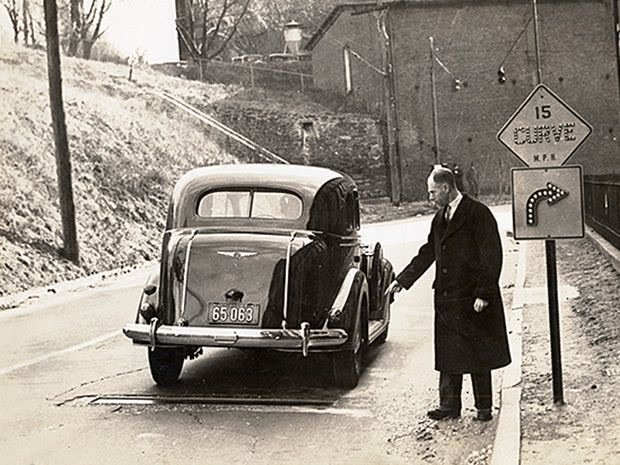5 days Writing Challenge: Day 2 - Meet a genius: Charles Adler Jr.
| Born | June 20, 1899 |
|---|---|
| Died | October 23, 1980 (aged 81) |
| Alma mater | Johns Hopkins University |
| Occupation | Inventor, Engineer |
| Known for | Transportation Safety |
Early childhood development and education
He created his first documented innovation at the age of 14, a car brake, for which he got a patent five years later.
After high school, Adler enrolled at Johns Hopkins University to study engineering, but after struggling academically for two years, he dropped out. During World War I, he served as an acting corporal in the US Army training corps until December 1918.
Early career
He set out to build a new flashing signal for grade crossings as his first solo effort. When a train approached, he designed an autonomously triggered device that flashed two lights alternately in a wigwag pattern. The American Railway Association endorsed this design, known as the Adler Flashing Relay, and it was later adopted by over 40 train firms.
Adler departed the Maryland and Pennsylvania Railroad after the success of his projects to pursue inventing full-time. However, he remained as a signal consultant for the company until 1957.
Well-known inventions
Automatic speed control system
Adler kept a notebook of prospective innovation ideas for a later date while at Ma&Pa. In the 1920s, one of these innovations, the automatic speed-control system, became the center of his career. On October 1, 1924, he developed the idea for this automotive safety device, and by December 1925, he had a working prototype.
Adler's speed control system was inspired by car speed governors, but he considered that they should only be used in the most dangerous areas of the road. Adler's method consisted of a series of bar magnets buried 20 meters away from dangerous places under the road. This magnet actuated a sequence of relays put in the car at speeds greater than 24 km/h, cutting the car's ignition. The ignition was restored once the car went over a similar second magnet, and the car could accelerate normally again.
Adler opted to market his idea rather than manufacture it himself in the hopes of finding a firm to license it. He sold the concept to the Baltimore and Ohio Railroad and had encouraging feedback from other potential buyers. Science Monthly and the New York Evening Post were among the 600 newspapers, periodicals, and engineering journals contacted by Adler to write pieces about his approach. His financial investors, however, put a stop to operations on December 15, 1926, until they could secure the support of the national government.
Sonically actuated traffic light
 Adler demonstrates one of his automated safety systems, which triggered a light when a car passed over a sound detector in the road. source
Adler demonstrates one of his automated safety systems, which triggered a light when a car passed over a sound detector in the road. source
Adler worked on creating the acoustically actuated traffic signal in the 1920s. To use it, cars approached a red light and honked their horns to alter the signal. The system was first installed by Baltimore on February 22, 1928 at the junction of Falls Road and then-Belvedere Avenue (now Northern Parkway), and it still stands today. General Electric took over production of this design, however Adler's traffic signal was beaten out by another idea. This was the country's first actuated traffic light, and it served as the model for modern traffic signals.
Adler erected a pedestrian push button at the junction of Charles Street and Cold Spring Lane in Baltimore on February 4, 1929. It was the world's first pedestrian-activated traffic light.
Aviation Safety Signal
Adler's efforts on traffic safety came to a stop by the end of the 1930s. He decided to pursue advancements in aviation safety after receiving his pilot's license and nearly colliding with another plane. In order to enable pilots see each other better at night, he invented an exterior lighting system for airplanes. In the name of safety, Adler handed this patent, along with nine of his other innovations, to the US government..
Other notable inventions
Colorblind signals
In 1930 Adler worked on a traffic signal based on different shapes for colorblind drivers.
Double-filament lamp
The Pennsylvania Central Railroad deployed Adler's double-filament lamp in 1933. The bulb's ability to run at half-capacity even when burned out helped keep railroad crossing lights operational for lengthy periods of time. Until the 1970s, the system was a part of the Pennsylvania Central Railroad.
.jpeg)